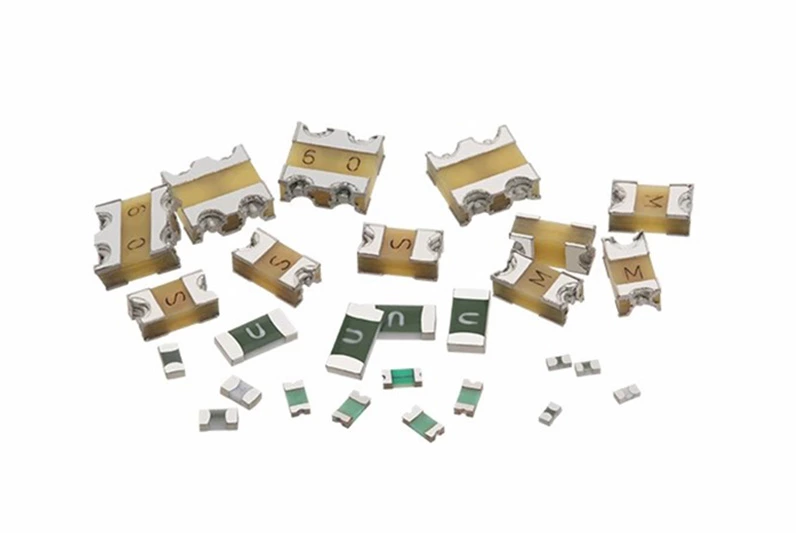Applications of Chip Fuses in Consumer Electronics
Modern consumer electronics—from smartphones and laptops to smart home devices—depend on compact, efficient, and reliable circuit protection.
As devices become smaller and more powerful, managing overcurrent and short-circuit events becomes increasingly critical. Chip fuses, also known as surface-mount fuses (SMD fuses), provide an ideal solution for safeguarding sensitive electronic components in compact designs.
PROSEMI specializes in high-performance chip fuses that deliver precise and stable protection for a wide range of electronic applications.

What Are Chip Fuses
Chip fuses are miniature overcurrent protection devices designed to open the circuit when excessive current flows through it.
Unlike traditional cylindrical fuses, chip fuses feature a flat, surface-mount structure, allowing automated assembly and excellent compatibility with modern PCB layouts.
They are widely used in consumer electronics where space efficiency, fast response, and high reliability are essential.
Why Chip Fuses Are Essential in Consumer Electronics
Consumer devices operate in compact enclosures, often with limited cooling and high component density.
An overcurrent or short-circuit event—even for milliseconds—can permanently damage ICs, batteries, or power management circuits.
Chip fuses ensure safety by:
- Interrupting excessive current instantly
- Protecting microprocessors and controllers from short circuits
- Preventing overheating and potential fire hazards
- Enhancing product reliability and customer safety
Common Applications of Chip Fuses
1. Smartphones and Tablets
In mobile devices, chip fuses protect:
- Battery charging circuits
- USB and Type-C ports
- Display and camera modules
Their fast response prevents board-level damage from charger faults or ESD events.
2. Laptops and Notebooks
Chip fuses are used in:
- DC input protection (power adapters, battery input)
- Motherboard power rails
- Peripheral I/O ports (USB, HDMI)
They help maintain stable power delivery and prevent costly motherboard failures.
3. Wearable and IoT Devices
Smartwatches, fitness trackers, and smart home gadgets rely on ultra-small fuses for:
- Low-voltage protection
- Compact battery management circuits
- Bluetooth and Wi-Fi module safety
Their tiny SMD size enables high-density integration in micro-scale PCBs.
4. Power Adapters and Chargers
Power supplies are prone to overcurrent due to voltage fluctuations or load faults.
Chip fuses prevent overload damage in:
- USB power adapters
- Laptop chargers
- Wireless charging modules
They ensure safe operation and compliance with international safety standards such as IEC 60127.
5. Audio and Entertainment Devices
In devices like smart speakers, TVs, and gaming consoles, chip fuses protect:
- Power amplifier circuits
- Signal processing modules
- Internal power distribution lines
Consistent fuse performance ensures long-term stability and low failure rates.

Advantages of Chip Fuses for Consumer Electronics
1.Compact and Lightweight – Ideal for modern miniature designs.
2.Fast Acting – Protects circuits in microseconds.
3.Surface-Mount Compatible – Suitable for automated assembly.
4.High Reliability – Stable operation under varying temperatures.
5.Cost-Effective Protection – No power consumption, simple integration.
Selecting the Right Chip Fuse
When designing protection for consumer devices, engineers should evaluate:
- Rated current & voltage – match circuit specifications
- Breaking capacity – sufficient for potential fault current
- Operating temperature range – ensure reliability under heat
- Time-current characteristics – choose fast or slow blow depending on load type
Collaborating with a reliable manufacturer ensures your fuse selection meets both performance and safety requirements.
Conclusion
From smartphones to smart homes, chip fuses play an indispensable role in protecting today’s high-performance consumer electronics. Their compact design, fast response, and stable performance make them a preferred choice for engineers seeking efficient circuit protection in space-limited applications.